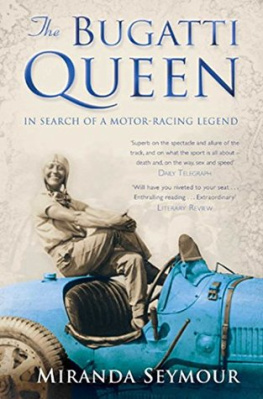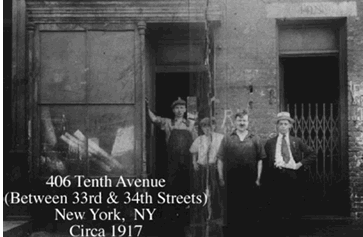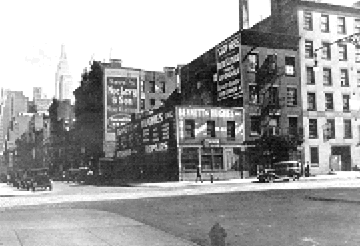Pretty Things
For
Nice People
Tales of Patrons & Artisans
The Challenges and Triumphs of
20th Century Artisans In New York
Joseph Fiebiger
Text copyright 2012 by Joseph Fiebiger
All rights reserved. No part of this book may be reproduced or transmitted in any form or by any means, electronic or mechanical, including photocopying, recording or by any information storage and retrieval system, without written permission from the publisher.
For information, address Enlightening Publishers, LLC
105 Eototo Road, El Prado, NM 87529
Email: publishers@icloud.com
First Edition
1 2 3 4 5 6 7 8 9 0
Printed in the United States of America
Library of Congress Cataloging-in-Publication Data
Joseph Fiebiger, 1944
Pretty Things For Nice People 1st ed.
Summary: History of P.A. Fiebiger, Inc., a New York City based company of metal artisans.
The patrons, and stories that drove the commissions. Indepth attention to the
Restorations of The Statue of Liberty and Ellis Island in the 1980s.
[1. Identity-Non-Fiction. 2. Artistic Metal Work 3. Statue of Liberty Restoration. 4. United States Capitol.
5. Central Park, New York City] I. Title.
Front Cover Art: Gary #5278299, Fotolia
Back Cover Art: John Anderson #10518673, Fotolia
Visit www.enlighteningpublishers.com
Sincere Thanks
Naturally thanks to my life partner and wife, Balinda. She listened to all of this stuff, ad nauseam, until it had a personality of its own (we hope).
Deepest thanks to the late Charles Ryskamp who placed the bee in bonnet to write this work. He said, Ill edit for you. Im serious, Joe. The stories are part of the art.
Many thanks to Martha Hackley, of The Frick Collection; Theodore S. Bartwink, of the Harkness Foundation For Dance; Stephen T. Ayers, Architect of the Capitol; Barbara Wolanin, Curator of the Capitol, Amy Elizabeth Burton, Office of the Senate Curator; Theodore Ceraldi, Timothy Lynch, Michael Lynch, James Semans, and Mary Biddle Duke Semans.
Gratitude indeed to the Statue of Libertys great historical archivist at the Bob Hope Memorial Library at Ellis Island, Barry Moreno.
More thanks: The preferred photographer of the Statue of Liberty / Ellis Island Foundations Peter B. Kaplan for his photographs and factual editing for Lady Liberty; Stephen Briganti of the Statue of Liberty / Ellis Island Foundation.
Paul August Fiebiger
Paul James Fiebiger
Back Row: Walter Gonzalez, Florencio Perez
Middle Row: Joe Karhut, Joseph Fiebiger, Antonion Del Vecchio
Front Row: Gennaro (Bruno) Ranieri
Dedicated to
Opa, Dad,
Gennaro Bruno Ranieri
and
all of the multi-talented men who made these works.
And to the patrons who gave us the privilege to serve the art that we all loved.
Thanks to the foreman / artisan for Paul August Fiebiger,
remembered today by the author as Joseph.
Thanks to the talented Alfonso De Pippo who worked
with Paul James Fiebiger.
And thanks to Florencio Amigo Perez,
Joseph Karhut
and Master Craftsmen / Artisan,
Gennaro Bruno Ranieri.
Publishers Note
In order to keep publishing costs to a minimum, this book is published with black and white photographs.
The color versions of the photographs can be viewed at:
http://enlighteningpublishers.com
or
http://www.pafiebiger.com
Table of Contents
Chapter 1 Opa 1
Chapter 2 Father Spellman 8
Chapter 3 Trinity Episopal Church 12
Chapter 4 Frank Stanton 15
Chapter 5 John D. Rockefeller, Sr.. 17
Chapter 6 Library of Presidential Papers 20
Chapter 7 Del Colman 23
Chapter 8 Brooke Astor 25
Chapter 9 The 21 Club 29
Chapter 10 Enid Haupt 33
Chapter 11 Central Park 38
Chapter 12 Caramoor 45
Chapter 13 Rebekah Harkness 49
Chapter 14 Gainesway Farm 58
Chapter 15 United States Capitol 62
Chapter 16 The Morgan Library 70
Chapter 17 The Frick Collection 81
Chapter 18 The Metropolitan Museum of Art 93
Chapter 19 Mary B.D.T. Semans 112
Chapter 20 Donald J. Trump 126
Chapter 21 Restoration of The Statue of Liberty 130
Chapter 22 A Framework For Restoration 141
Chapter 23 The Human Elements 179
Chapter 24 Ellis Island 202
Epilog 217
Credits For Photographs 219
Schedule of Commissions 229
Chapter 1
Opa
S ex hour? Hell! We didnt even have a coffee break! That was my grandfathers response when asked about his first job in America. Always Opa to me, he had emigrated from Germany in 1898. His first job was as a foreman/blacksmith for The Sexaur Iron Works in New York City.
He chose to hitch his wagon to his own star and began P.A. Fiebiger Ironworks in New York City in May 1900. Dad, born four years later, became his partner as soon as he was old enough.
Opa worked on the forge until his 88th year. He said the reason he lived so long was that he saw what water did to iron, so he only drank wine. No kidding! He even brushed his teeth with wine.
Opa made a specially designed hand truck to transport damaged electric motors to the motor re-winding company on Tenth Avenue at 38th Street and also to transport two, five-gallon jugs of wine from the liquor store at Tenth Avenue 42nd Street. The truck was designed for a young boy to be able to pull it and navigate the curbs without damaging either the motors or the wine.
The young man on the right is Paul James Fiebiger
The New York City Police Department converted Ninth and Tenth Avenues from two-way to one-way in 1948. Ninth Avenue was southbound, Tenth Avenue northbound. Eleventh Avenue remained two-way. There were no curb cuts to provide handicap access or allow a young boy easy navigation. Our shop was located on the southeast corner of 36th Street and Tenth Avenue, at the mouth of the Lincoln Tunnel in the heart of Hells Kitchen.
Legend has it that Hells Kitchen got its name from the most prominent Irish gin mill in the area, Halleys Bar. Ironically, its supposed underworld prominence made it safe. Each of these businesses paid a dollar a week to Merchants Protection Agency. Who they were? No one ever knew. Safety was guaranteed to those who kept proverbial clean noses.
Southeast Corner of Tenth Avenue and 36th Street
Before construction of the Lincoln Tunnel
Ca. 1932
The avenues and side streets were always busy with cars, trucks, buses and cabs. Always moving, always stopping, always noisy. The sidewalks were lined with light manufacturing buildings like ours, and tenement houses. Usually five-story walk-ups with businesses on the ground floors. Butchers, grocers, bakers, restaurants, bars, cobblers, tailors, dry cleaners, motor re-winders, liquor stores, auto parking lots and auto repair facilities dotted the neighborhood.

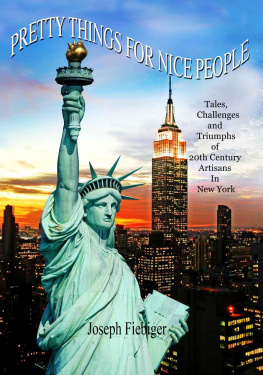
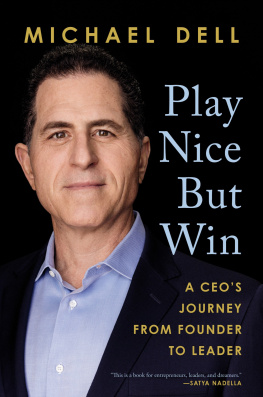
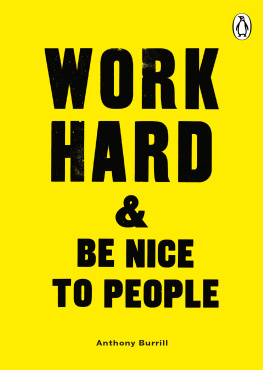
![Stack - It is just you, everythings not shit: [a guide to all things nice]](/uploads/posts/book/253795/thumbs/stack-it-is-just-you-everything-s-not-shit-a.jpg)




